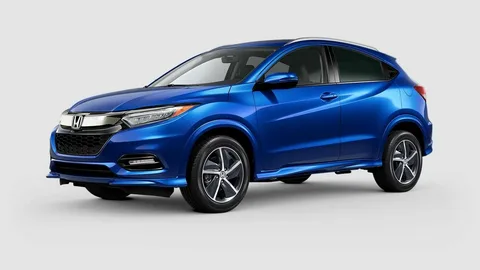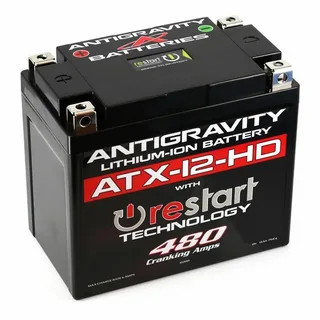HRV price is a significant consideration when investing in a heat recovery ventilator system. Understanding the costs involved and finding the perfect match for your budget can be challenging. This blog post will explore the factors influencing HRV values, the average price range, installation costs, and long-term savings associated with these systems.
Understanding the Basics of Heat Recovery Ventilators
Heat recovery ventilators (HRVs) are an integral component of modern, energy-efficient homes, ensuring a continuous exchange of air. Central to their operation is the heat exchanger mechanism, which facilitates the transfer of heat from the outgoing stale air to the incoming fresh air without mixing the two air streams.
This process not only preserves a comfortable indoor temperature but also significantly reduces the reliance on traditional heating and cooling systems, contributing to decreased energy consumption. HRVs are particularly beneficial in tightly sealed buildings where ventilation is limited, as they help mitigate pollutants and moisture, enhancing indoor air quality.
These systems’ effectiveness greatly depends on their proper installation and operation within a suitably designed ventilation system. With a focus on sustainability and energy conservation, HRVs play a pivotal role in modern building designs, aligning with efforts to create healthier living environments and being mindful of energy usage and its impacts.
Average HRV Value Range
MVHR systems’ prices can widely vary, primarily influenced by unit size, brand reputation, and the inclusion of advanced features. The variation in cost underscores the importance of thoroughly evaluating one’s requirements and the desired functionalities of an MVHR system before making a purchase decision.
For those on a strict budget, identifying which features are essential and which are optional can help them navigate the wide price spectrum effectively. Exploring the market for various offers is worthwhile, as the cost can significantly differ among models that perform the same basic functions.
This diverse pricing structure ensures that an MVHR system is available for a variety of financial plans, allowing many to access the benefits of improved indoor air quality and energy efficiency.
Factors Influencing HRV System Cost
Larger buildings require hrv system cost with greater capacity to ventilate the space effectively. Higher capacity typically means higher costs due to the increased materials and technology required.
Brand and Quality
Premium brands often command higher prices due to their reputation for durability, efficiency, and advanced technology. Investing in a high-quality system can lead to better performance and longer service life.
Advanced Features
Systems equipped with smart technology, such as remote monitoring and automatic adjustments based on indoor air quality readings, can increase the price. These features offer enhanced convenience and efficiency but at a premium.
Installation Complexity
The cost can vary depending on the complexity of the installation. Older homes or those without existing ductwork may require additional work, increasing the overall cost.
Energy Efficiency Ratings
Higher efficiency ratings often correlate with higher initial prices. However, more efficient systems can lead to lower operating costs over time, offering savings on energy bills.
Geographical Location
Labour and installation costs can vary significantly by location. Urban areas or regions with a high cost of living may see higher prices for the HRV system and the installation services.
Understanding these factors can help individuals make more informed decisions when selecting an HRV system that fits their needs and budget.
Installation Costs: What to Anticipate
Anticipating installation costs for a heat recovery ventilator system is crucial for comprehensive budgeting. These costs can differ significantly, primarily based on the intricacy of the installation process and any necessity for supplementary ductwork.
The variance in price is attributed to several factors, including the home’s structure, compatibility with existing ventilation systems, and the specific requirements of the installed HRV system.
Employing a qualified installer is vital for ensuring that the system functions efficiently and adheres to all relevant regulations and standards. It’s also important to consider that some properties, especially older homes or those without pre-existing ventilation pathways, may incur higher costs due to the need for more extensive modifications or the installation of new ductwork.
Heat Vent: Understanding the Role and Importance
In the intricacies of an HRV system, the heat vent emerges as a pivotal component, primarily tasked with transferring heat from outgoing air to incoming air. This critical process allows the incoming cooler air to be pre-warmed, significantly reducing the demand for heating systems during colder months.
The efficiency of a heat- vent is fundamental to the overall performance of an HRV system, as it directly impacts energy consumption and, by extension, utility costs. A well-functioning heat- vent ensures a balance between maintaining a comfortable indoor environment and adhering to energy efficiency principles by recirculating warmth that would otherwise be lost.
This not only reduces carbon footprint but also supports a sustainable living approach. Consequently, the role and importance of a heat -vent within an HRV system cannot be overstated, highlighting its contribution to environmental sustainability and household energy management.
Operational Costs: Running Your HRV System
Considering the operational costs of a heat recovery ventilator system is vital for accurately assessing its overall financial impact. These expenses predominantly encompass electricity usage, essential for powering the system, routine maintenance, and the periodic replacement of filters to maintain air quality and system efficiency.
Electricity consumption largely depends on the model and efficiency of the HRV unit, with more energy-efficient models potentially offering significant power savings. Filter replacements are a recurring expense necessary to ensure the system operates effectively, preventing dust and allergens from compromising air quality and system performance.
Additionally, regular maintenance, including checks and cleaning performed by professionals, ensures the longevity and efficiency of the HRV system, safeguarding against potential breakdowns and the associated unexpected costs.
Heating Vents: Exploring Types and Costs
Heating vents, essential for the distribution of warmed or cooled air within a building, come in various materials, sizes, and designs, each influencing their overall cost. This variance in cost is attributable to the type of vent selected; for instance, basic metal vents may sit at the lower end of the price spectrum, whilst designer vents made from premium materials or featuring intricate designs can command higher prices.
The selection process of heating- vents also considers their compatibility with the existing heating, ventilation, and air conditioning (HVAC) system and the space’s aesthetic requirements. Additionally, the installation costs for these vents are not included in the price above range. They will vary based on factors such as the complexity of the installation and the need for any structural modifications to accommodate the new vents.
Long-Term Savings: The Economic Benefits of HRVs
The economic benefits of HRVs extend beyond the initial cost outlay, promising long-term savings in several key areas:
Reduced Heating Costs
By reusing the heat from expelled indoor air, HRVs decrease the need for additional heating, resulting in substantial savings on energy bills.
Lower Cooling Expenses
Similarly, during warmer months, HRVs can help maintain cooler indoor temperatures by transferring excess heat from incoming air to the outgoing stream, minimising the reliance on air conditioning units.
Enhanced System Longevity
HRVs contribute to the durability of HVAC systems by reducing the operational demand and extending the lifespan of existing heating and cooling units.
Improved Air Quality, Lower Health Costs
By facilitating a continuous exchange of fresh air, HRVs diminish the presence of pollutants and allergens indoors, potentially reducing healthcare expenses related to respiratory conditions.
Energy Rebates and Incentives
Some regions offer rebates or incentives for installing energy-efficient systems like HRVs, providing an immediate return on investment.
Sustainability Benefits
The reduced energy consumption associated with HRVs supports a more sustainable living environment, potentially increasing property values over time.
Heat Recovery Ventilator Sizing: Finding the Right Fit
The appropriate size for a heat recovery ventilator sizing is critical to its effectiveness and efficiency. The process involves assessing various factors, such as the overall dimensions of the property, the average number of individuals residing within, and the specific climate conditions of the area.
An HRV system that is too small for the space will struggle to provide adequate ventilation, leading to ineffective air exchange and potential energy loss. Conversely, an overly large system may result in unnecessary energy consumption and increased operational costs.
Calculations typically incorporate the volume of air that needs to be exchanged to ascertain the correct size, factoring in the building’s insulation levels and air tightness. Consulting with a professional who can evaluate these aspects can ensure that the chosen HRV system meets the precise requirements of the property, guaranteeing optimal performance and contributing to a healthier indoor environment.
Maximising Efficiency: Tips for HRV System Maintenance
Ensuring the efficiency of a heat recovery ventilator system involves a series of maintenance actions that enhance its performance and longevity.
- Key practices include routine filter replacement, which prevents dust and allergens from impairing airflow and system efficacy.
- The heat exchanger, a core component of the HRV system, requires periodic cleaning to maintain its ability to efficiently transfer heat without wasting energy.
- Additionally, it is crucial to inspect the ductwork and connections for leaks, as these can significantly diminish the system’s effectiveness.
- Seasonal adjustments to the HRV settings can also optimise energy savings and improve comfort levels within the property.
- Finally, engaging a qualified technician for annual maintenance checks ensures the system operates at its best, identifying potential issues before they lead to costly repairs or decreased efficiency.
Conclusion
Hrv system cost emerge as an invaluable investment for enhancing indoor air quality and achieving energy savings. Navigating the intricacies of HRV pricing, potential buyers can align their selection with their financial constraints while reaping the benefits over time. Ensuring the system is appropriately installed, accurately sized, and diligently maintained underscores the essence of realising its full potential. As environmental sustainability and energy efficiency continue to take precedence in residential considerations, heat recovery ventilators are pivotal in modern home ventilation solutions, facilitating a healthier indoor atmosphere and fostering a more sustainable lifestyle.
FAQs
What Factors Should Be Considered When Selecting An hrv system cost?
Critical considerations include the size and layout of the property, climate conditions, the hrv system cost energy efficiency ratings, and the household’s specific needs. Additionally, the brand’s reputation and the availability of after-sales support should influence the decision-making process.
How Often Do HRV Filters Need To Be Replaced?
The frequency of filter replacement varies depending on the HRV system’s model and the home’s air quality. Generally, filters should be replaced every 3 to 6 months. However, households with pets, high dust levels, or smokers may require more frequent changes.
Can An HRV System Reduce Energy Bills?
An HRV system can significantly reduce the need for additional heating or cooling by efficiently recirculating heat from expelled indoor air. Over time, this can lead to considerable savings on energy bills, offsetting the initial investment cost of the system.




